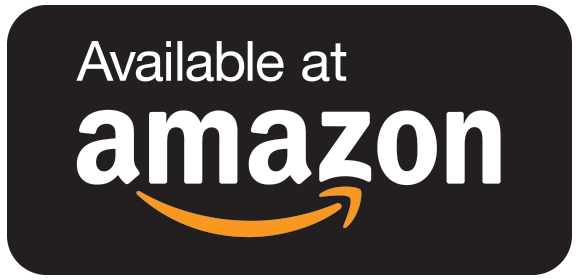Read eBook on Lokayatan app
Based on the New Education Policy.
*By purchasing you agree to the Terms & Conditions
1.1 Introduction
Communication is life and life is communication. It starts with birth and continues till death. The very success of an organisation is built upon effective communication. Effective communication is the lifeblood of every organization and a key to success in our business career and our personal life. It establishes the relationship between the superior and the subordinate, and the quality of relationship revolves around the nature of communication.
1.2 Meaning of Communication
The word communication has been derived from the Latin word ‘communicare’ that means ‘to share’. Communication may be defined as interchange of thought or information between two or more persons to bring about mutual understanding and desired action. It is the information exchange by words or symbols. It is the exchange of facts, ideas and viewpoints which bring about commonness of interest, purpose and efforts.
1.3 Definitions of Communication
According to the American Society of Training Directors – “Communication is the interchange of thought or information to bring about mutual understanding and confidence or global human relation.”
According to Keith Davis – “The process of passing the information and understanding from one person to another.”
According to T.S. Mathews – “Communication is something so simple and difficult that we can never put it in simple words.”
So, on the basis of the above definitions, we can say that Communication is the soul, lifeline or blood of the organisation. Communication skills have emerged as the most powerful set of skills to possess for accelerating one’s career trajectory and speed of accomplishment in every occupation. Effective communication skills provide the ladder to the managers and leaders for rapid progression in their careers.
An organisation cannot function without people interacting, conversing or corresponding with one another. All enterprises require human beings working for it or with it, too:
1. Coordinate and control
2. Exchange information, ideas, plans and proposals
3. Interact and react
4. Lead or direct people and devise their jobs so as to adhere to the plan
5. Make assumptions about future or forecast future events
6. Measure and monitor
7. Organise or design a format of how to get resources together to achieve the plan
8. Plan or draw up a rough blueprint for the future
9. Staff or gather or recruit people and get them to desired locations
Communication has been described as the ‘glue’ that holds the entire organisation together as one entity. Without communication, managers or leaders are not able to influence the attitude and behaviour of people to achieve the common objectives.
1.4 Purpose of Communication
1. For direction: Communication is necessary to issue directions by the top management or manager to the lower level. Employee can perform better when he is directed by his senior. Directing others may be communicated either orally or in writing. An order may be common order, request order or implied order.
2. For employee’s orientation: When a new employee enter into the organization at that time he or she will be unknown to the organization programs, policies, culture etc. Communication helps to make people acquainted with the co-employees, superior and with the policies, objectives, rules and regulations of the organization.
3. For evaluation: Examination of activities to form an idea or judgement of the worth of task is achieved through communication. Communication is a tool to appraise the individual or team, their contribution to the organization.
Evaluating one’s own inputs or other’s outputs or some ideological scheme demands an adequate and effective communication process.
4. For image building: A business enterprise cannot isolate from the rest of the society. There is interrelationship and interdependence between the society and an enterprise operating in the society. Goodwill and confidence are necessarily created among the public. It can be done by the communication with the different media, which has to project the image of the firm in the society. Through an effective external communication system, an enterprise has to inform the society about its goals, activities, progress and social responsibility.
5. For influencing: A complete communication process is necessary in influencing others or being influenced. The individual having potential to influence others can easily persuade others. It implies the provision of feedback which tells the effect of communication.
6. For information: The purposes or function of communication in an organization is to inform the individual or group about the particular task or company policies and procedures etc. Top management informs policies to the lower level through the middle level. In turn, the lower level informs the top level the reaction through the middle level. Information can flow vertically, horizontally and diagonally across the organization. Becoming informed or inform others is the main purpose of communication.
7. For instruction: The instructive function unvarying and importantly deals with the commanding nature. It is more or less of directive nature. Under this, the communicator transmits with necessary directives and guidance to the next level, so as to enable them to accomplish his particular tasks. In this, instructions basically flow from top to the lower level.
8. For integration: It is consolidated function under which integration of activities is endeavoured. The integration function of communication mainly involves to bring about inter-relationship among the various functions of the business organization. It helps in the unification of different management functions.
9. For teaching: The importance of personal safety on the job has been greatly recognized. A complete communication process is required to teach and educate workers about personal safety on the jobs. This communication helps the workers to avert accidents, risk etc. and avoid cost, procedures etc.
1.5 Objectives of Communication
Following are the main objectives/purpose of communication:
1. For suggestions: Employees and customers are a useful source of new ideas for the business as they are indirect touch with operations and procedures of banking. Suggestions flow upwards as feedback and represent a mild and subtle form of communication.
2. To convey the right message: the main objective of communication is to convey the right message to the right person.
3. To give and receive information: In an organisation, the management uses communication to keep the employees well informed about the goals, policies and rules. Meetings, telephone, notices, employee and bulletins are used to convey necessary information to employees. The information may be given or received orally or in writing.
4. To impart education and training: Education involves formal communication over a long period so as to widen the knowledge and skills.
5. To improve discipline: Rules and regulations are made known to employees through written and oral communications. Suggestions and grievances from employees help managers to make the necessary changes in disciplinary rules and procedures.
6. To persuade people: Persuasion is an important objective of communication and it requires the ability to speak and write effectively. Persuasion is more effective when face-to-face conversation is used with tact.
7. To provide advice: Advice may be given on personal or official matters. In business, supervisors advise workers in handling machines and equipment in
factory or office. Managers need specialised advice from experts in matters like taxation, project finance, quality control, etc.
1.6 Need or Importance of Communication
The importance of communication in an organization are as follows:
1. Controlling misunderstanding: With good communication, organisation prevent misunderstandings. Rumors and bad will can derail an organization. Someone says something, and someone else takes offense. But when there’s open and honest communication, everyone’s on the same page. Sure, there may be disagreements, but they are less likely to turn into problems when differences of opinion are given the outlet and respect they deserve.
2. Controlling process: communication also assists in controlling process. It helps controlling organizational member’s behaviour in various ways. There are various level of principles and guidelines, which employees must follow in an organization. They must comply with organizational policies, perform their job role efficiently and communicate any work problem and grievance to their superiors. Thus, communication helps in controlling function of management.
3. Good communication builds good teams: When team leaders are effective communicators, they inspire workers to reach for a common goal. They make sure everyone knows their responsibilities and how to perform them. With an open dialogue, employees pitch in when others in the organization need their help, and know when to ask for help, in return.
4. It helps in socializing: Communication also helps in socializing. In today’s life, the only presence of another individual fosters communication. It is also said that one cannot survive without communication.
5. It helps to check attitude: Communication also plays a crucial role in altering an individual’s attitudes, i.e., a well-informed individual will have a better attitude than a less-informed individual. Organizational magazines, journals, meetings and various other forms of oral and written communication help in molding employee’s attitudes.
6. It promotes motivation: Communication promotes motivation by informing and clarifying the employees about the task to be done, the manner, they are performing the task, and how to improve their performance if it is not up to the mark.
7. Source of information: Communication is a source of information to the organizational members for decision-making process as it helps to identify and assessing an alternative course of actions.
An effective and efficient communication system requires managerial proficiency in delivering and receiving messages. A manager must discover various barriers to communication analyze the reasons for their occurrence and take preventive steps to avoid those barriers. Thus, the primary responsibility of a manager is to develop and maintain an effective communication system in the organization.
1.7 Essentials Characteristics or Nature of Communication
1. Communication is a two-way process: It involves both information and understanding. Communication is not complete unless the receiver has understood the message properly and the sender knows his reaction or response. Understanding is the result of communication but it does not imply agreement.
2. Communication may be formal or informal: Formal communication follows the formal channels provided in the organisation structure. In simple words, informal communication, there is no direct communication between the Managing Director and the accounts clerks. Informal communication flows through informal channels of communication, which are not provided in the organisation structure. These channels develop among members because of personal contacts through working with each other.
3. Communication may be written, oral or gestural: Communication is generally understood as spoken of written words. But, in reality, it is more than that. It includes everything that may be used to convey meanings from one person to another, e.g., movement of lips or the wink of an eye or the wave of hands may convey more meaning than even written or spoken words.
4. It flows up and down or from side to side: Communication flows downward from a superior to subordinate and upward from subordinate to superior. It also flows between two or more persons operating at the same level of authority.
5. It involves at least persons: Communication involves at least two persons, a sender and receiver. The sender is called communicator and the receiver of the message is known as communication. A person who speaks, writes or issues some instructions is the sender and the person for whom the communication is meant or who receives the message is the receiver communicate.
6. Its primary purpose is to motivate a response: The primary purpose of communication is to motivate a response or human behaviour. There is no doubt that motivation comes from within but communicator can also motivate people by the good drafting of the message, proper timing of communication, etc. to create understanding, communication should be relevant to the situation. It must always be remembered that communication is a means of motivating and not an end in itself.
7. Message is necessary: A message is the subject matter of communication, e.g. the contents of the letter or speech, order, instructions or the suggestions. A communication must convey some message. If there is no message, there is no communication.
Overview & Preview
| Book Type: | eBook, PDF (207 pages), 17 Chapters |
|---|---|
| Language: | English |
| ISBN: | 978-93-92308-10-9 |
This book is covering the complete syllabus of Business Communication. It is the only book of its kind which is student-friendly, teaching convenient, and exam-oriented at the same time. The main purpose of this book is to enable the student to write the correct, logical, relevant, coherent, well proportioned, and impressive answers to the questions asked in the examination.
The book has been written in very simple and understandable language along with the appropriate examples, diagrams, and other student-friendly concepts. Not only this book covers the long answer-type questions but also the short answer-type questions. Both of the question types are organized in the unit-wise syllabus.
Sample Pages
APPBOOK
Lokayatan publication has come up with this innovative idea to make the learning process even more fun and engaging for learners.
Stay
CONNECTED











